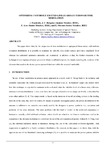Mostrar o rexistro simple do ítem
Optimizing Uniformly Excited Linear Arrays through Time Modulation
| dc.contributor.author | Fondevila, J. | |
| dc.contributor.author | Brégains, Julio | |
| dc.contributor.author | Ares Pena, F. J. | |
| dc.contributor.author | Moreno Piquero, E. | |
| dc.date.accessioned | 2016-09-01T15:20:26Z | |
| dc.date.available | 2016-09-01T15:20:26Z | |
| dc.date.issued | 2004-12 | |
| dc.identifier.citation | Fondevila, J.; Bregains, J.C.; Ares, F.; Moreno, E. "Optimizing uniformly excited linear arrays through time modulation", IEEE Antennas and Wireless Propagation Letters, 38 - 40 Volume: 3, Issue: 1, Dec. 2004 | es_ES |
| dc.identifier.issn | 1536-1225 | |
| dc.identifier.issn | 1548-5757 | |
| dc.identifier.uri | http://hdl.handle.net/2183/17249 | |
| dc.description.abstract | [Abstract] The letter shows that, by the proper use of time modulation in equispaced linear arrays with uniform excitation distribution, it is possible to maintain the sidelobe zone of the radiated power below a certain - previously stipulated - level, whereas the undesired harmonics are minimized. In addition to that, the further extension of the technique to non-equispaced arrays permits a broadband response to be obtained, by simply searching the positions of the elements that reach the desired power pattern behavior within the required bandwidth. | es_ES |
| dc.language.iso | eng | es_ES |
| dc.publisher | Institute of Electrical and Electronics Engineers | es_ES |
| dc.relation.uri | http://dx.doi.org/10.1109/LAWP.2004.838833 | es_ES |
| dc.subject | Power system harmonics | es_ES |
| dc.subject | Bandwidth | es_ES |
| dc.subject | Physics | es_ES |
| dc.subject | Frequency | es_ES |
| dc.subject | Antenna arrays | es_ES |
| dc.subject | Power distribution | es_ES |
| dc.subject | Network synthesis | es_ES |
| dc.subject | Simulated annealing | es_ES |
| dc.subject | Fourier series | es_ES |
| dc.title | Optimizing Uniformly Excited Linear Arrays through Time Modulation | es_ES |
| dc.type | info:eu-repo/semantics/article | es_ES |
| dc.rights.access | info:eu-repo/semantics/openAccess | es_ES |
| UDC.journalTitle | IEEE Antennas and Wireless Propagation Letters | es_ES |
| UDC.volume | 3 | es_ES |
| UDC.issue | 1 | es_ES |
| UDC.startPage | 298 | es_ES |
| UDC.endPage | 301 | es_ES |
| dc.identifier.doi | 10.1109/LAWP.2004.838833 |
Ficheiros no ítem
Este ítem aparece na(s) seguinte(s) colección(s)
-
GI-GTEC - Artigos [193]






